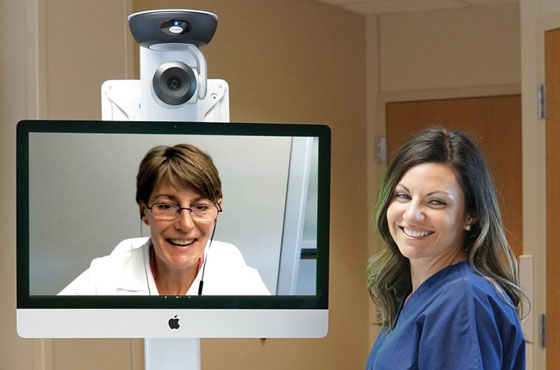Inadequacy of the Current Telehealth Solutions in the Market

In a previous blog, we establish why we needed Telehealth. We even cited the miraculous real-life story of Dr. FitzGerald((Hevesi, Dennis. “Jerri FitzGerald, 57, Dies; Treated Own Cancer at South Pole)), who had her life saved, thanks to Telehealth. But we left out a major point. That is why we have created this follow up blog.
The current telehealth models are not good enough. They have a major flaw and they are not fit to be rolled out for use and it is causing and will continue to cause problems for both doctor and patient.
The major flaw with the current telehealth solutions market is that they are all stand alone and does not come with an integrated platform.
You might be thinking, “so what?” The “what” is that, with an integrated telemedicine platform:
- You can search, select and make appointments. Imagine how much easier the life of the caretakers can be, if they could take care of appointments with the click of 2 or 3 widgets?
- Doctors can consult, and make notes on the same platform without leaving it. It has been shown in multiple surveys and studies((https://www.medicaleconomics.com/editors-choice-me/its-time-get-doctors-out-ehr-data-entry)) that doctors are already having issues with paying enough attention to the patients, due to incompetent EHRs, and they’re also overworked and feeling low in morale because of the amount of extra time they have to spend working on filling out the forms on the EHR.
Asking them to add multitasking to this, is cruel. It is absolutely necessary that the doctor be able to spend as much time on the patient as possible. For the sake of the patient, as well as the interests of the hospital/practice to provide the best care possible, to keep doctors happy and boost morale, to make a profit and to avoid a malpractice lawsuit, an integrated care platform is pertinent.
- Doctors can coordinate care using an integrated platform. Sometimes, giving care doesn’t stay at one location or with one caregiver. For instance, in an episode of House M.D.(referred to in the previous blog) that was inspired by Dr. FitzGerald, there was a caretaker at the location with the patient. But they alone were not able to provide care for the patient. The other team that was providing care was continents away and they had ideas about what could be the issue and they had tests they wanted to run and symptoms they wanted to check for.
By working together and reporting back and forth using telehealth, they solved the problem. In that example, they didn’t have an EHR. But think about that scenario if they had? Tests were given that could not be analyzed by the away team, because of this. What if the patient was having a heart problem and it wasn’t detected by the home-based doctor? By having an EHR that can communicate these test results, the away team would be able to analyze the data and convey it to the home team doctor, so that the best care can be provided instantly.
- Doctors can get paid by the patient and by the insurance company using the integrated billing module. Billing is one of the biggest problems for healthcare providers. Getting reimbursement from insurances being a bigger one. In fact, many doctors have said that they would like to accept insurances and provide care to as many people as they can, but the amount of work that is expected and the costs necessary to try and work with insurances is too much.
A system that takes this task and fits in neatly and conveniently, at no extra cost, would be a godsend to any provider. This would allow the practice/hospital to provide care to more people, while increasing their revenue, without increasing their overhead costs.
So to recap: Integrated Care Platforms will:
- Let you provide more and better care.
- Help increase morale for care providers, while reducing the hours they work.
- Lets the practice/hospital increase revenue, without any increased overhead costs.
What is the drawback here? If you’re interested in such a solution and would like to learn more about it, take a look at what we have to offer: Click here to learn how blueEHR helps telehealth providers launch their platform in 30 days.